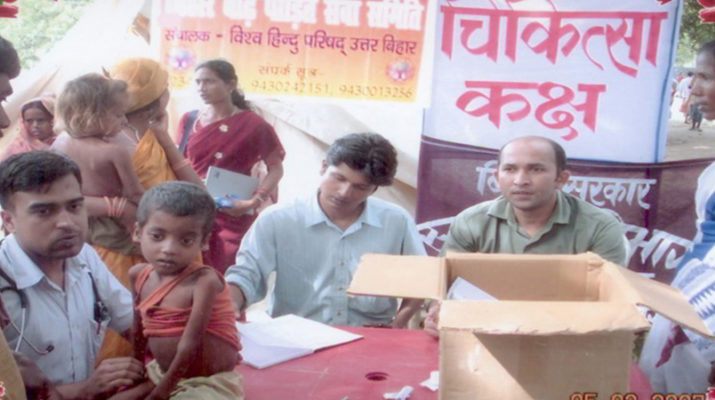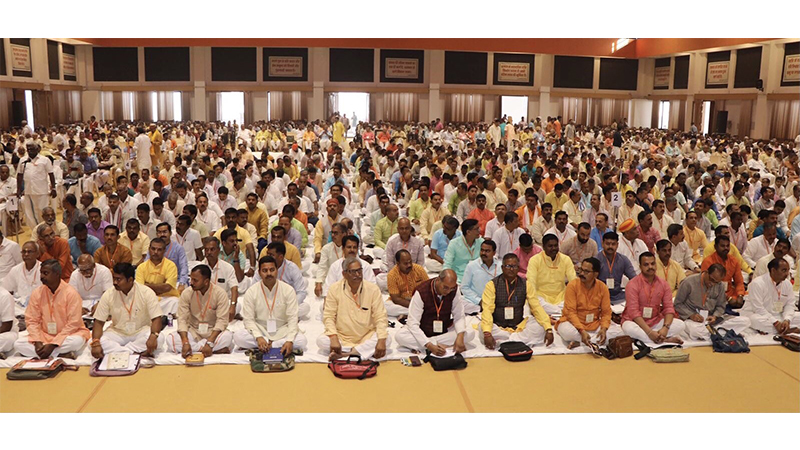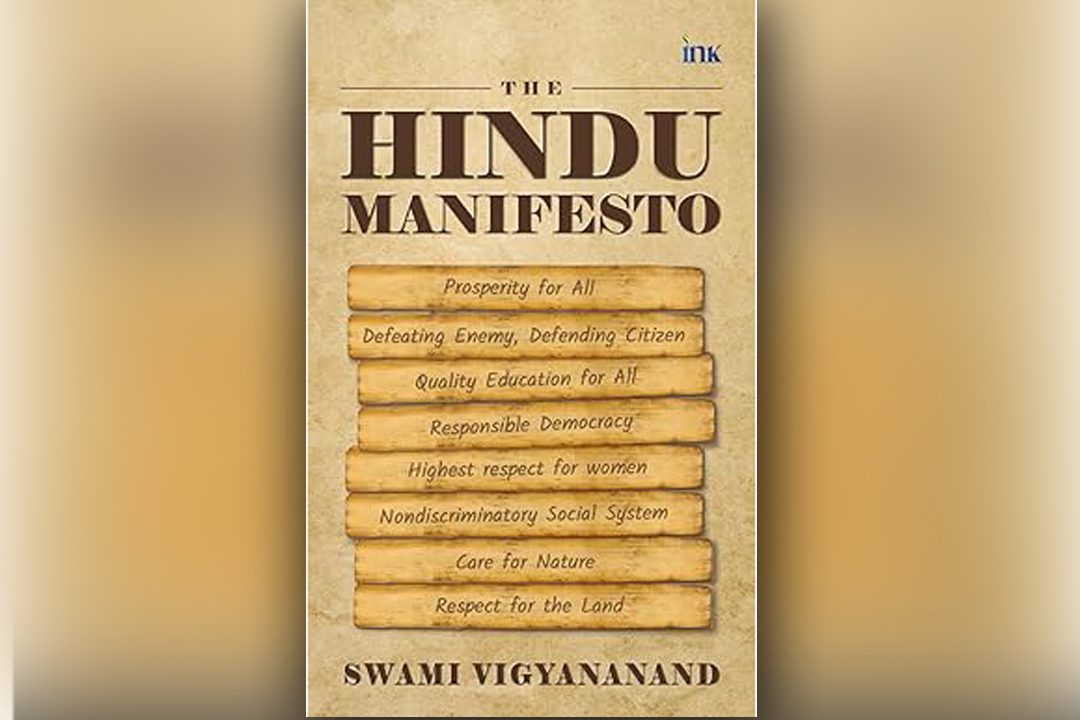VHP isn’t only about building Ram temple in Ayodhya, ‘it’s all about social engineering’
Updated: December 15, 2022 11:07

A key objective behind setting up VHP was to ensure all prominent Hindu leaders come together on one platform & unanimously denounce caste-based discrimination in Hindu society.
The Vishwa Hindu Parishad (VHP), for most of us, is synonymous with the Ramjanmabhoomi movement from the 1980s onwards. It was the VHP that led this movement from the front and it wouldn’t be an exaggeration to say it single-handedly changed India’s polity and public discourse establishing ‘Hindutva’ at the core of Indian public life. You may love it or hate it, but you cannot ignore it.
Here lies the irony too. The VHP has come to be known for most of its sympathisers as well as its detractors as an assertive Hindu organisation with a single-point agenda of constructing the Ram temple in Ayodhya.
The fact of the matter is that the VHP’s work, expanse and domain go much beyond the Ram temple issue. The cliched use of social engineering in Indian polity and society started in the 1980s and picked up in the 1990s when BJP started making inroads into the marginalised castes. For many though, the Ram temple movement was the pioneering attempt in creating this social engineering.
The fact is that setting up of the VHP in 1964 on the occasion of Janmashtami at Sandeepni Ashram in Mumbai in the presence of 40 leading lights of society was a major step towards social engineering. The VHP was set up after the Rashtriya Swayamsevak Sangh realised in the 1950s that caste discrimination is a major fault line of Hindu society and is being exploited for religious conversions.
The Niyogi Committee Report in 1956, which gave a detailed account of conversions in Madhya Pradesh by Christian missionaries, proved to be a key trigger point. The other trigger point was that the Indian diaspora got in touch with the RSS and sought its help to retain their connection with their cultural roots.
Prompted by these two factors, the second sarsanghchalak of the RSS, M.S. Golwalkar, popularly known as ‘Guruji’, chose a low-profile but senior RSS pracharak, Dada Saheb Apte, to set up an organisation that could address these two issues.
Apte started travelling across the country and also got in touch with several people abroad. He wrote hundreds of letters and met almost every major Hindu religious leader, intellectual and other prominent personalities from different walks of social life.
Swami Chinmayananda played a significant role in thrashing out this idea and provided constant support to Apte. For almost eight years, the groundwork continued and, finally, on the pious day of Janmashtami in 1964, this organisation by the name of Vishwa Hindu Parishad was set up.
Aim to denounce caste-based discrimination in Hindu society
One of the key objectives of setting up the VHP was to ensure that all prominent Hindu religious leaders should come together on one platform and unanimously denounce caste-based discrimination in Hindu society. This wasn’t an easy task as many religious sects had diametrically opposite views.
However, Apte was backed by Guruji, who himself was initiated into ‘sanyas’ in the 1930s at Ramakrishna Mission. Guruji was well connected with all major Hindu saints and he was considered a spiritually advanced leader. His connect and respect as well as the support of Swami Chinmayananda, who was also one of the leading lights of Hindu society at the time, helped Apte smoothen the rough edges and bring everyone on a single platform.
Thus, the setting up of the VHP was the second big move by the RSS in terms of addressing the fault lines of Hindu society that kept it divided. The first major move, which had gone unnoticed, was the setting up of Vanvasi Kalyan Ashram in the 1950s. This organisation was set up to work in tribal areas for integrating them with the mainstream so that religious conversions could be prevented.
The VHP, since its inception, has worked mostly with a focus on this objective and it achieved quite a lot over the next couple of decades till it took a plunge into the Ram Janmabhoomi movement in 1983-84 and got completely identified with it.
The first objective was realised by the VHP within two years of its establishment. In 1966, it successfully organised the first World Hindu Conference on the occasion of the Kumbh at Prayagraj, Uttar Pradesh. On this pious occasion, representatives from across the globe came and attended the conference. The attendees included all major Hindu religious leaders and they unanimously announced that caste-based discrimination is not endorsed by any sect or belief or a sacred text.
This was followed by a massive expansion of the VHP across the country, and, by the early 1970s, it had set up its branches in most countries where there was an Indian diaspora and started attracting huge crowds to its programmes.
Throughout the 1960s and 1970s as well as the 1980s, the VHP organised ‘Hindu conferences’ in every district of the country and, hence, took its footprint to every nook and corner of the country. From Jammu-Kashmir to Kanyakumari and from Arunachal Pradesh to Gujarat, it not only set up its organisational units at state and district levels, but also continued to hammer the message against caste-based discrimination. Simultaneously, it also started a movement that encouraged all those who wanted to come back to the fold of ‘Hindu dharma’. It made Hindu religious leaders endorse this move as well.
In addition, the VHP also set up a ‘service wing’, which runs hundreds of schools, libraries, health centres, vocational training centres and single-teacher schools in the remote areas of the country where there are no educational facilities. Such single-teacher schools are known as ‘Ekal Vidyalayas’. The VHP also has a women’s wing that takes up social causes and empowers women and girls by training them in self-defence.
In fact, since the mid-1980s, while the VHP seemed to be too busy with the Ramjanmabhoomi movement, the truth is that its leaders and cadres had been working hard simultaneously on reaching out to new areas and domains and setting up more and more social welfare or service projects. However, it was being done quietly, and with the media glare largely focussed on the Ram temple movement, the media and many others missed the point that the VHP isn’t only about building the Ram temple in Ayodhya. There is much more to it than that.
(The article was first published in The Print on 30 August, 2021 https://theprint.in/india/vhp-isnt-only-about-building-ram-temple-in-ayodhya-its-all-about-social-engineering/724347/ )












